Math for Programmers 3D graphics machine learning and simulations with Python 1st Edition BY Paul Orland ISBN 1638357072 9781638357070
$50.00 Original price was: $50.00.$25.00Current price is: $25.00.
Math for Programmers 3D graphics machine learning and simulations with Python MEAP V10 1st Edition Paul Orland Digital Instant Download
Author(s): Paul Orland
Edition: 1
File Details: EPUB, 21.19 MB
Year: 2020
Language: English
Math for Programmers 3D graphics machine learning and simulations with Python 1st Edition BY Paul Orland – Ebook PDF Instant Download/Delivery: 1638357072, 978-1638357070
Full download Math for Programmers 3D graphics machine learning and simulations with Python 1st Edition after payment
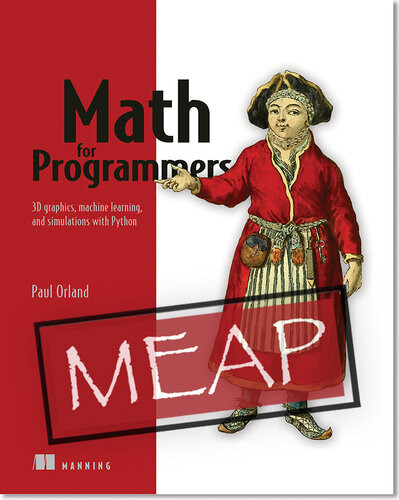
Product details:
ISBN 10: 1638357072
ISBN 13: 978-1638357070
Author: Paul Orland
To score a job in data science, machine learning, computer graphics, or cryptography, you need to bring strong math skills to the party. Math for Programmers teaches the math you need for these hot careers, concentrating on what you need to know as a developer.
Filled with lots of helpful graphics and more than 300 exercises and mini-projects, this book unlocks the door to interesting-and lucrative!-careers in some of today’s hottest programming fields.
Purchase of the print book includes a free eBook in PDF, Kindle, and ePub formats from Manning Publications.
Filled with lots of helpful graphics and more than 300 exercises and mini-projects, this book unlocks the door to interesting-and lucrative!-careers in some of today’s hottest programming fields.
Purchase of the print book includes a free eBook in PDF, Kindle, and ePub formats from Manning Publications.
Math for Programmers 3D graphics machine learning and simulations with Python 1st Table of contents:
Part 1: Vectors and Graphics
1. Learning Math with Code
- 1.1 Solving Lucrative Problems with Math and Software
- Predicting financial market movements
- Finding a good deal
- Building 3D graphics and animations
- Modeling the physical world
- 1.2 How Not to Learn Math
- Jane wants to learn some math
- Slogging through math textbooks
- 1.3 Using Your Well-Trained Left Brain
- Using a formal language
- Build your own calculator
- Building abstractions with functions
- Summary
2. Drawing with 2D Vectors
- 2.1 Picturing 2D Vectors
- Representing 2D vectors
- 2D drawing in Python
- Exercises
- 2.2 Plane Vector Arithmetic
- Vector components and lengths
- Multiplying vectors by numbers
- Subtraction, displacement, and distance
- Exercises
- 2.3 Angles and Trigonometry in the Plane
- From angles to components
- Radians and trigonometry in Python
- From components back to angles
- Exercises
- 2.4 Transforming Collections of Vectors
- Combining vector transformations
- Exercises
- 2.5 Drawing with Matplotlib
- Summary
3. Ascending to the 3D World
- 3.1 Picturing Vectors in 3D Space
- Representing 3D vectors with coordinates
- 3D drawing with Python
- Exercises
- 3.2 Vector Arithmetic in 3D
- Adding 3D vectors
- Scalar multiplication in 3D
- Subtracting 3D vectors
- Computing lengths and distances
- Computing angles and directions
- Exercises
- 3.3 The Dot Product: Measuring Vector Alignment
- Picturing the dot product
- Computing the dot product
- Measuring angles with the dot product
- Exercises
- 3.4 The Cross Product: Measuring Oriented Area
- Orienting ourselves in 3D
- Finding the direction and length of the cross product
- Exercises
- 3.5 Rendering a 3D Object in 2D
- Defining a 3D object with vectors
- Projecting to 2D
- Orienting faces and shading
- Exercises
- Summary
4. Transforming Vectors and Graphics
- 4.1 Transforming 3D Objects
- Drawing a transformed object
- Composing vector transformations
- Rotating an object about an axis
- Inventing your own geometric transformations
- Exercises
- 4.2 Linear Transformations
- Preserving vector arithmetic
- Visualizing linear transformations
- Why linear transformations?
- Computing linear transformations
- Exercises
- Summary
5. Computing Transformations with Matrices
- 5.1 Representing Linear Transformations with Matrices
- Writing vectors and transformations as matrices
- Multiplying a matrix with a vector
- Composing transformations by matrix multiplication
- 3D animation with matrix transformations
- Exercises
- 5.2 Interpreting Matrices of Different Shapes
- Column vectors as matrices
- Viewing matrices as vector functions
- Projection as a linear map
- Composing linear maps
- Exercises
- 5.3 Translating Vectors with Matrices
- Translating 3D objects
- Combining translation with other transformations
- Exercises
- Summary
6. Generalizing to Higher Dimensions
- 6.1 Generalizing Our Definition of Vectors
- Creating and improving vector classes
- Defining vector spaces
- Unit testing vector space classes
- Exercises
- 6.2 Exploring Different Vector Spaces
- Treating functions and matrices as vectors
- Manipulating images with vector operations
- Exercises
- 6.3 Looking for Smaller Vector Spaces
- Identifying subspaces and their dimensions
- Exercises
- Summary
7. Solving Systems of Linear Equations
- 7.1 Designing an Arcade Game
- Modeling and rendering the game
- Shooting the laser
- Exercises
- 7.2 Finding Intersection Points of Lines
- Solving linear equations with NumPy
- Deciding if the laser hits an asteroid
- Exercises
- 7.3 Generalizing Linear Equations to Higher Dimensions
- Solving linear equations in 3D
- Studying hyperplanes
- Exercises
- 7.4 Changing Basis by Solving Linear Equations
- Exercises
- Summary
Part 2: Calculus and Physical Simulation
8. Understanding Rates of Change
- 8.1 Calculating Average Flow Rate
- Implementing and visualizing average flow rate
- Exercises
- 8.2 Plotting the Average Flow Rate
- Finding interval flow rates
- Exercises
- 8.3 Approximating Instantaneous Flow Rates
- Building instantaneous flow rate functions
- Exercises
- 8.4 Approximating the Change in Volume
- Picturing the change in volume with Riemann sums
- Exercises
- 8.5 Plotting the Volume Over Time
- Using definite and indefinite integrals
- Exercises
- Summary
9. Simulating Moving Objects
- 9.1 Simulating Constant Velocity Motion
- Updating the game engine with moving asteroids
- Exercises
- 9.2 Simulating Acceleration
- Accelerating the spaceship
- Exercises
- 9.3 Euler’s Method for Motion Simulation
- Implementing and running Euler’s method
- Exercises
- Summary
10. Working with Symbolic Expressions
- 10.1 Finding Exact Derivatives
- Using a computer algebra system (CAS) in Python
- Exercises
- 10.2 Modeling Algebraic Expressions
- Building and evaluating expression trees
- Exercises
- 10.3 Symbolic Expression Operations
- Expanding and evaluating expressions
- Exercises
- 10.4 Finding Derivatives
- Derivatives of powers, products, and compositions
- Exercises
- 10.5 Taking Derivatives Automatically
- Implementing derivative methods
- Exercises
- 10.6 Integrating Functions Symbolically
- Using the SymPy library for integration
- Exercises
- Summary
11. Simulating Force Fields
- 11.1 Modeling Gravity
- Using a potential energy function for gravity
- Exercises
- 11.2 Defining and Modeling Gravitational Fields
- Visualizing force fields
- Exercises
- 11.3 Adding Gravity to the Game
- Making game objects feel gravity
- Exercises
- 11.4 Potential Energy
- Defining and visualizing scalar fields
- Exercises
- 11.5 Connecting Energy and Forces with the Gradient
- Calculating gradients and force fields
- Exercises
- Summary
12. Optimizing a Physical System
- 12.1 Testing a Projectile Simulation
- Exploring different launch angles
- Exercises
- 12.2 Calculating the Optimal Range
- Finding and solving for maximum range
- Exercises
- 12.3 Enhancing the Simulation
- Modeling terrain and solving in 3D
- Exercises
- 12.4 Optimizing Range Using Gradient Ascent
- Implementing gradient ascent to optimize range
- Exercises
- Summary
13. Analyzing Sound Waves with a Fourier Series
- 13.1 Combining and Decomposing Sound Waves
- Playing and manipulating sound waves
- Exercises
- 13.2 Producing and Sampling Sound Waves
- Generating sound waves in Python
- Exercises
- 13.3 Fourier Series and Sound Waves
- Decomposing waves using Fourier series
- Exercises
- Summary
Part 3: Machine Learning Applications
14. Fitting Functions to Data
- 14.1 Measuring the Quality of Fit
- Using cost functions and fitting models
- Exercises
- 14.2 Exploring Function Spaces
- Visualizing function spaces and fits
- Exercises
- 14.3 Finding the Line of Best Fit
- Using gradient descent for fitting linear models
- Exercises
- 14.4 Fitting a Nonlinear Function
- Finding exponential functions that fit data
- Exercises
- Summary
15. Classifying Data with Logistic Regression
- 15.1 Testing Classification Functions
- Using real data for classification
- Exercises
- 15.2 Fitting Logistic Regression
- Implementing logistic regression and fitting models
- Exercises
- 15.3 Adding Regularization to Logistic Regression
- Preventing overfitting with regularization
- Exercises
- Summary
16. Working with Neural Networks
- 16.1 Training Neural Networks
- Implementing and training basic neural networks
- Exercises
- 16.2 Understanding Neural Network Layers
- Visualizing and understanding neural networks
- Exercises
- 16.3 Testing Neural Network Accuracy
- Evaluating and improving accuracy
- Exercises
- Summary
Part 4: Advanced Topics
17. The Geometry of Deep Learning
- 17.1 High Dimensional Geometry
- Understanding data spaces in higher dimensions
- Exercises
- 17.2 Visualizing High Dimensional Spaces
- Techniques to reduce dimensionality and visualize data
- Exercises
- Summary
People also search for Math for Programmers 3D graphics machine learning and simulations with Python 1st:
3d math for game programmers
what kind of math do you need for programming
why do you need math for programming
mathematics for 3d programming and computer graphics
mathematics for 3d game programming and computer graphics
Tags:
Paul Orland,Math,Programmers,graphics,machine,learning,simulations,Python 1st
You may also like…
Sale!
Mathematics
Sale!
Computers - Artificial Intelligence (AI)
Sale!
Computers - Programming
Sale!
Sale!
Computers - Computer Science
Sale!
Computers - Computer Science
Sale!
Computers - Programming
Sale!
Sale!
Computers - Computer Graphics & Design



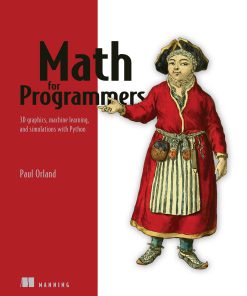
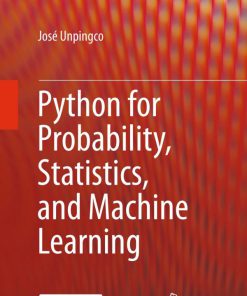
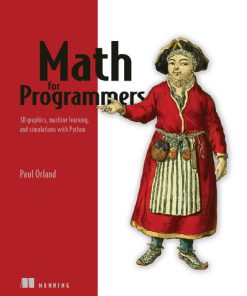
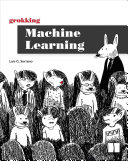
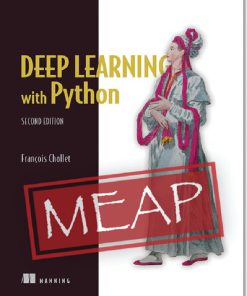
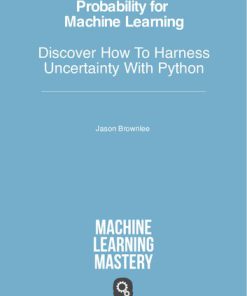
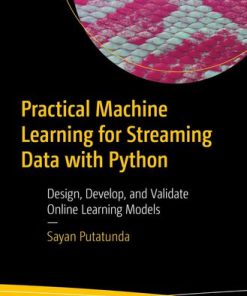
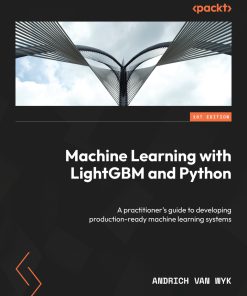
![Python Graphics: A Reference for Creating 2D and 3D Images 1st Edition B.J. Korites [Bernard Korites]](https://textbookfull.com/wp-content/uploads/2024/04/python-graphics-a-reference-for-creating-2d-and-3d-images-7374606-247x296.jpg)